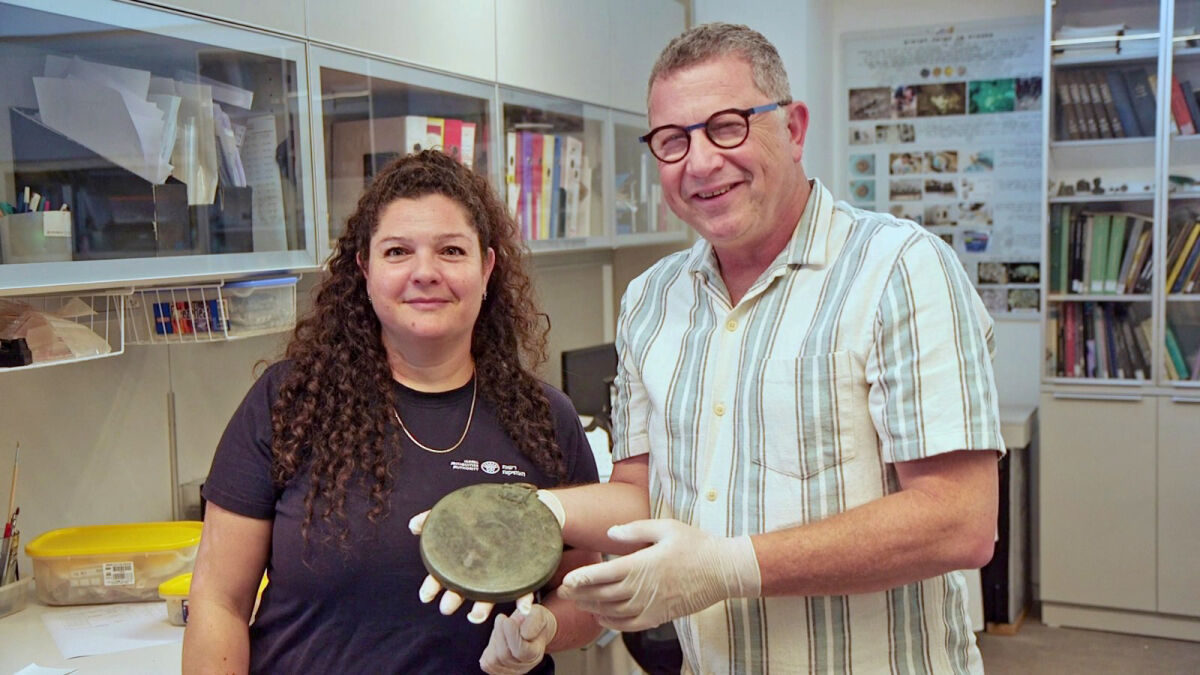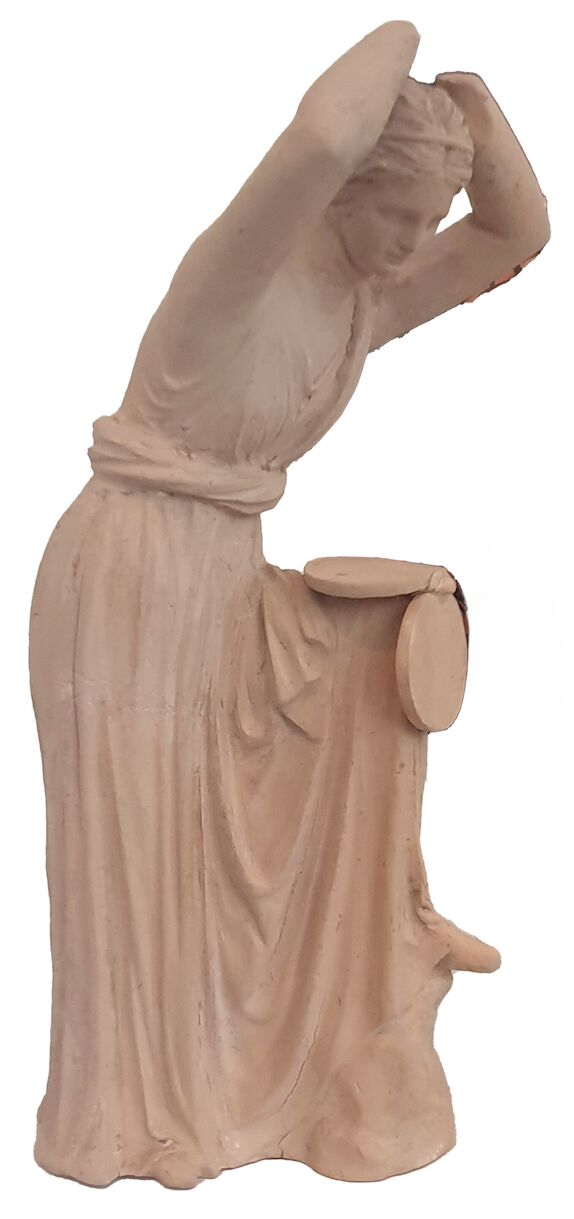Excavations conducted by the Israel Antiquities Authority near Hebron Road, in southern Jerusalem, have yielded the discovery of an ancient burial cave. Dating from the late fourth century to early third century b.c.e., this cave sheds light on the rare evidence associated with the Hellenistic period in Jerusalem.
Remains of a cremated young woman were found in the cave. According to Dr. Guy Stiebel from the Department of Archaeology and the Ancient Near East at Tel Aviv University, “[T]his is, in fact, the earliest evidence in Israel of cremation in the Hellenistic period.” Together with the burned remains were a number of bent iron nails, as well as—most surprisingly—a bronze folding mirror, in such a state of preservation that “it looked as if it was made yesterday,” said Liat Oz, director of the excavations.

The folding bronze mirror box “is only the second mirror of this type that has been discovered to date in Israel, and in total, only 63 mirrors of this type are known around the Hellenistic world,” continued Oz.

This begs the question: What was a Greek woman’s tomb doing on a highway leading to Jerusalem, far from any settlement?
The researchers believe that the woman was a traveling courtesan (or hetaira) to a high-ranking Hellenistic military official, as opposed to a married woman. This is because married Greek women rarely left the home or joined their husbands on military campaigns. Further, “[t]he fact that there was no settlement near the burial cave, seemingly indicates that this is the tomb of a Greek woman … buried on the roadside,” according to the press release.
“It is most likely that this is the tomb of a woman of Greek origin who accompanied a senior member of the Hellenistic army or government, during Alexander the Great’s campaigns or more likely during The Wars of the Diadochi (successors),” the researchers concluded. Alexander the Great’s arrival in Jerusalem is a particularly famous episode: The first-century Jewish historian Josephus noted that a procession of priests went out to meet Alexander and his forces, and showed to the Greek general passages from the book of Daniel in which his conquests against the Persians were prophesied (particularly chapters 2, 7-8, and 11).
[And Alexander] was then glad … and bid them ask what favors they pleased of him; whereupon the high priest desired that they might enjoy the laws of their forefathers, and might pay no tribute on the seventh year. He granted all they desired. And when they entreated him that he would permit the Jews in Babylon and Media to enjoy their own laws also, he willingly promised to do hereafter what they desired. (Antiquities of the Jews, 11.8.5)


The researchers hope, with further study, to pinpoint the origin of the mirror and even the senior official accompanying the woman. They noted that “bronze mirrors like the one that was found were considered an expensive luxury item, and they could come into the possession of Greek women in two ways: as part of their dowry ahead of a wedding, or as a gift given by men to their hetairai. As such, the mirrors symbolized, among other things, the connection—as well as the intimate relations between the clients and the hetairai,” with such escorts serving a similar function to that of a Japanese geisha.
The findings and results of the study will be presented on Wednesday, October 11, at the conference “New Studies in the Archaeology of Jerusalem and Its Region” (details here).

